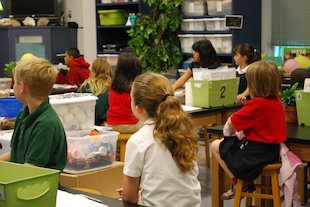Science: Common misconceptions
- Supports home learning
Add to My Folder
Science misconceptions are widespread across the primary science curriculum. Not only do children come to us with their own experiences and observations of the world, which may have shaped certain misconceptions, but they also bring concepts and ideas that have been driven by the language we as adults use around them – the sun moving across the sky – or misinformation they have been unintentionally fed.

General approaches to misconceptions
With the enormous potential for misconceptions across the curriculum in science, there are a number of approaches we should adopt around science misconceptions in our day-to-day teaching:
- Model good understanding in terms of concepts and the scientific method.
- Focus on preventing misconceptions arising by offering non-examples where possible.
- Use misconceptions as an assessment opportunity and incorporate them into your planning.
- Use concept cartoons to help establish understanding or highlight misconceptions.
- Always ask children why they have reached a certain conclusion or hold a certain belief – this helps identify what the misconception is rooted in.
- Use practical examples where possible to develop understanding.
- Use models to help explain abstract ideas.
- Focus on misconceptions that have arisen, rather than all misconceptions.
- Keep a list or glossary of science misconceptions.
Common misconceptions
Scientific misconceptions pop up across the curriculum. Below we set out some of the more common misconceptions.
We’d also recommend that you take a look at the Primary Science Teaching Trust (PSTT) website, which contains a number of useful resources that outline background information to help resolve specific misconceptions.
Evolution
- That a giraffe’s neck became longer because it kept stretching to reach leaves.
- That acquired characteristics can be inherited.
- That humans are the end point and pinnacle of evolution.
- That humans used to be monkeys.
- That an individual can evolve during its own lifespan.
- That evolution creates perfectly adapted living things.
- That natural selection is an active process.
- That natural selection always leads to positive outcomes.
Already a member? Sign in below.
Published 11 July 2022
Reviews
You need to be signed in to place a review.